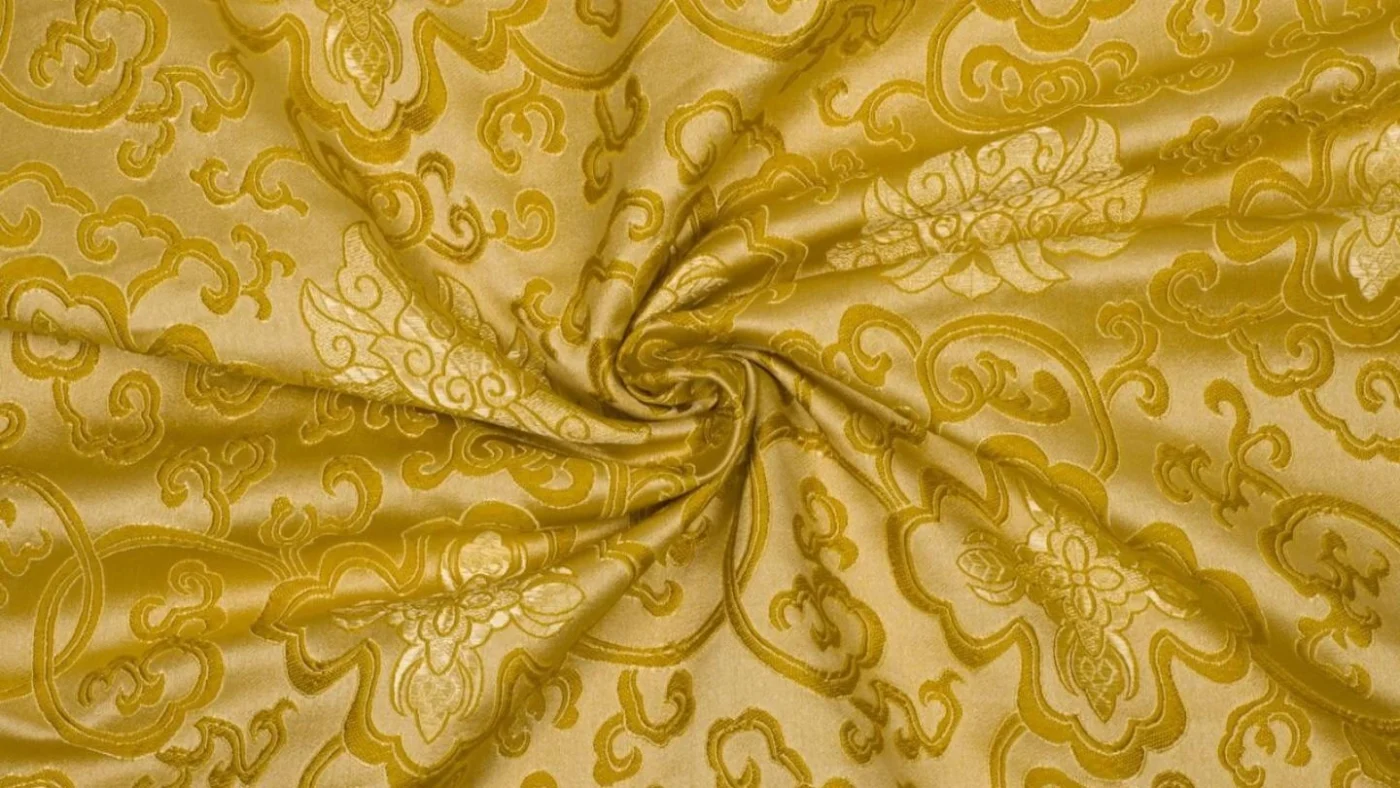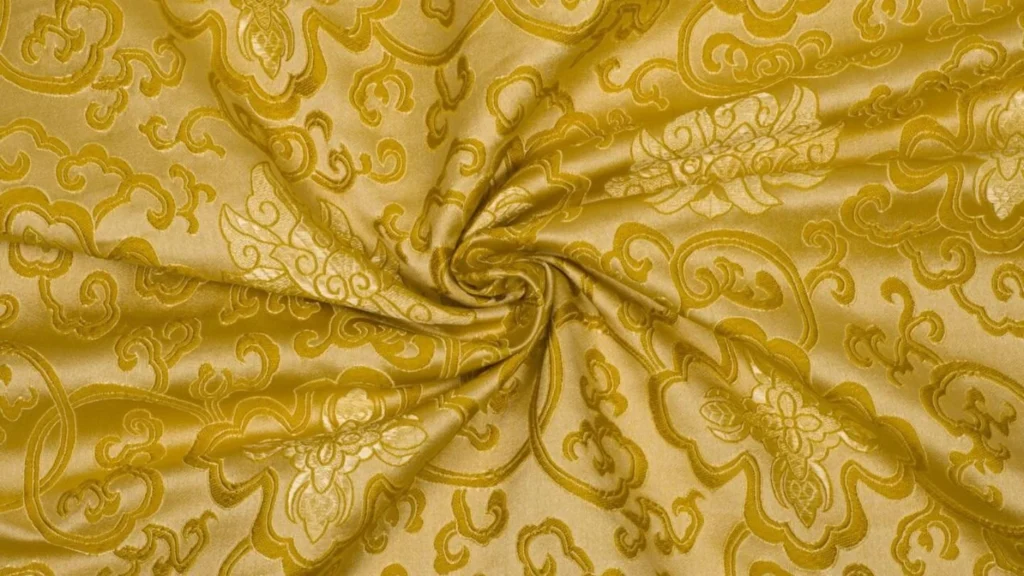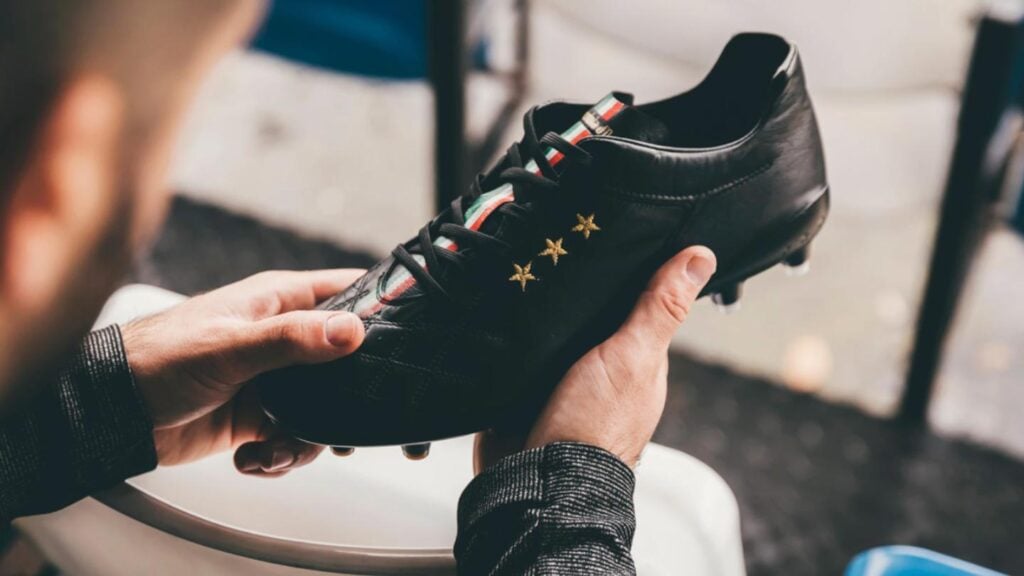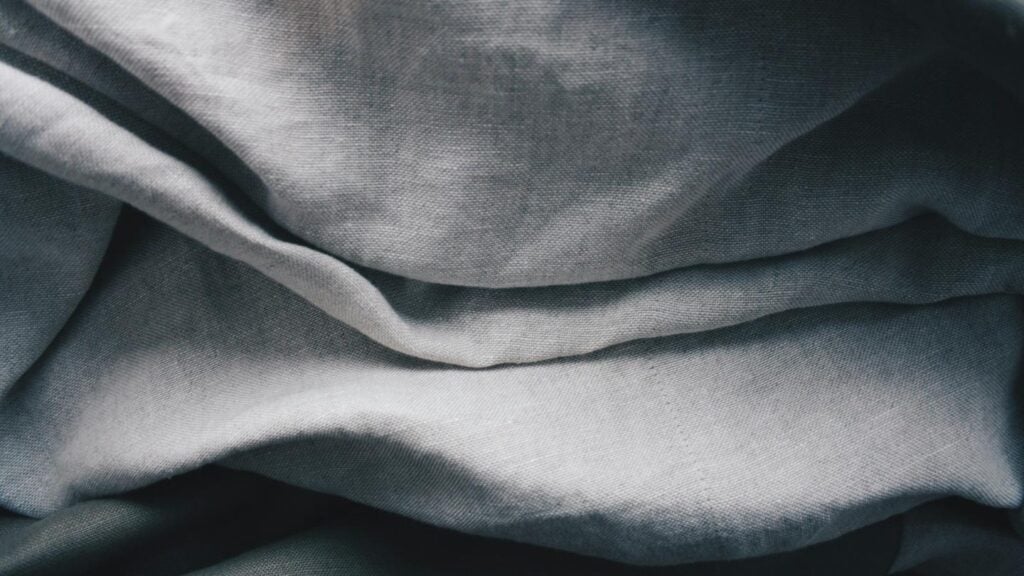2 – Brocade Fabric Composition
3 – Brocade Fabric vs Other Fabrics
4 – Brocade Fabric Is Manufactured
5 – Common Uses in Fashion
6 – Understanding the Environmental Impact of Brocade Fabric
7 – Exploring Price Points and Value for Money
8 – Conclusion
9 – FAQs
What is Brocade Fabric?
Brocade fabric is a luxurious, richly textured textile often associated with intricate patterns and vibrant designs. Historically, Brocade has been linked to royalty and aristocracy, widely used in opulent garments, upholstery, and ceremonial wear. This fabric is traditionally woven with silk, although today it can also include synthetic fibers and metallic threads, making it more accessible while retaining its elegant, luxurious feel.
The key feature of Brocade is its raised, woven patterns, which are usually floral, geometric, or abstract. These patterns are woven directly into the fabric during the manufacturing process, rather than being printed or embroidered on top. This gives Brocade a three-dimensional quality that makes it stand out from other fabrics.
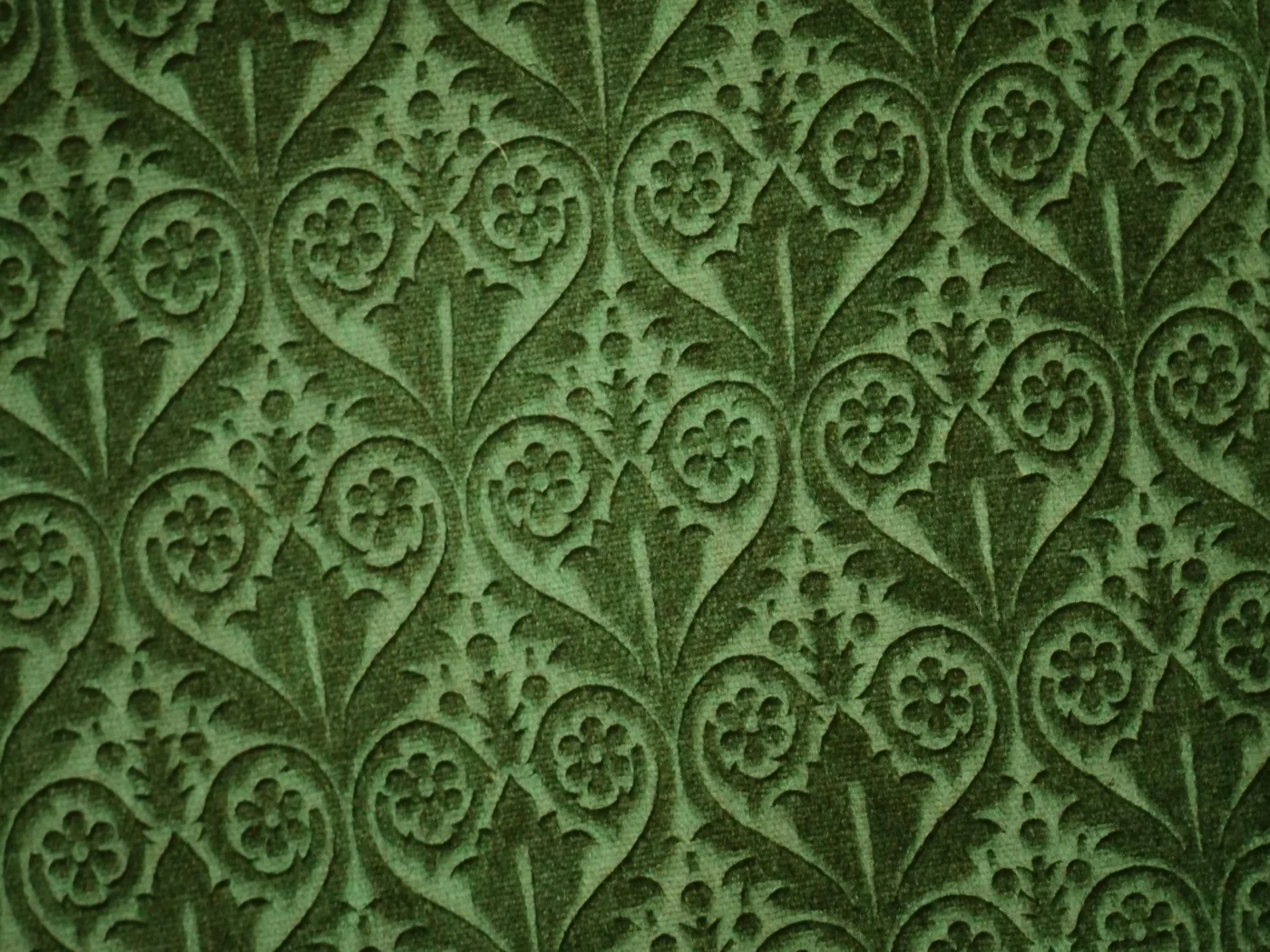
Key Characteristics of Brocade Fabric:
- Rich Patterns: Brocade is known for its intricate, raised patterns that create a textured surface.
- Luxurious Appearance: The fabric’s use of silk or metallic threads gives it a shiny, sophisticated finish.
- Heavyweight: Brocade is typically heavier than other fabrics, making it ideal for formal wear and upholstery.
Brocade’s elegance and durability have made it a staple in luxury fashion and interior design for centuries. It remains a popular choice for evening gowns, wedding dresses, and upscale home décor, prized for its ability to add a touch of grandeur and timeless appeal to any setting.
Brocade Fabric Composition
Brocade fabric can be made from various materials, each affecting its texture, appearance, and price:
- Silk Brocade:
The traditional and most luxurious option, silk Brocade has a smooth, lustrous finish that enhances its intricate woven patterns. It’s often used for formal wear and wedding dresses. - Synthetic Blends:
Brocade can also be made with synthetic fibers like polyester or rayon, offering a more affordable option. These blends retain the fabric’s signature look but are easier to care for. - Metallic Threads:
Gold, silver, or copper threads are often woven into Brocade, adding shine and enhancing its rich appearance, making it ideal for formal garments and décor. - Cotton and Linen Blends:
For a more casual or durable option, cotton and linen Brocade offer a heavier fabric with less sheen, commonly used in home textiles like curtains and cushions.
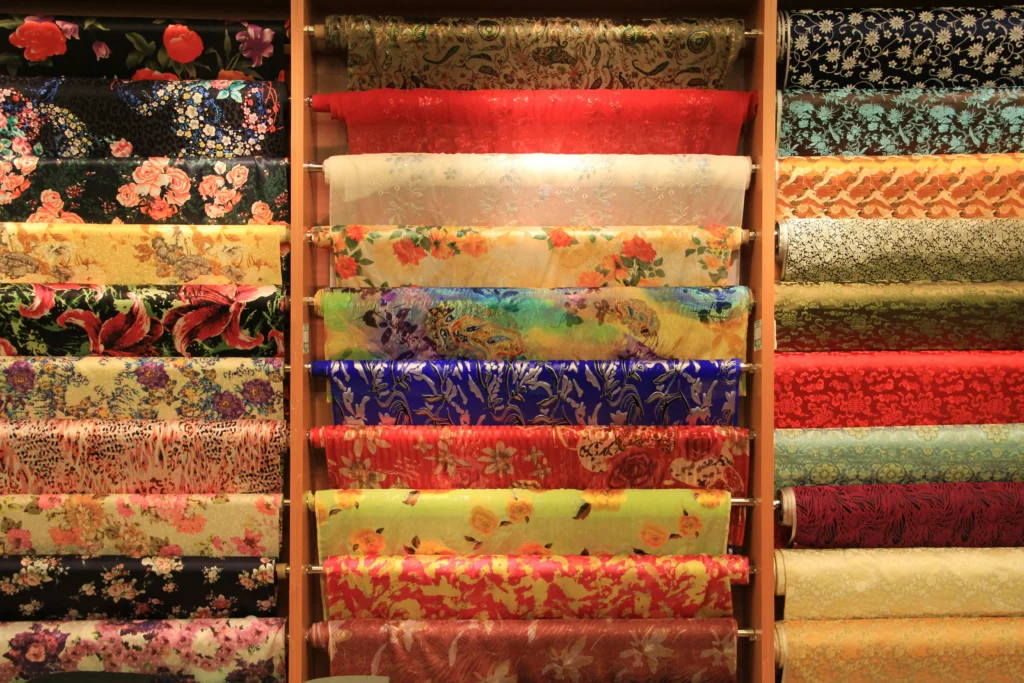
The fabric’s composition affects its look and use, with silk Brocade offering luxury, and synthetic and cotton blends making it more accessible for various applications.
Brocade Fabric vs Other Fabrics
Brocade stands out for its intricate, raised patterns and luxurious feel. Here’s how it compares to similar fabrics:
- Brocade vs Damask:
Both have detailed patterns, but brocade features raised, three-dimensional designs, often with metallic threads, while Damask is flatter and typically made from simpler, single-tone threads. - Brocade vs Jacquard:
Brocade is a type of Jacquard fabric, but it uses metallic threads and is heavier, making it more luxurious. Jacquard fabrics can vary in complexity and are usually lighter than Brocade. - Brocade vs Velvet:
Velvet is softer with a plush texture, while Brocade is heavier and more structured, with raised patterns. Velvet suits sleek designs, while Brocade is favored for its traditional, formal look.
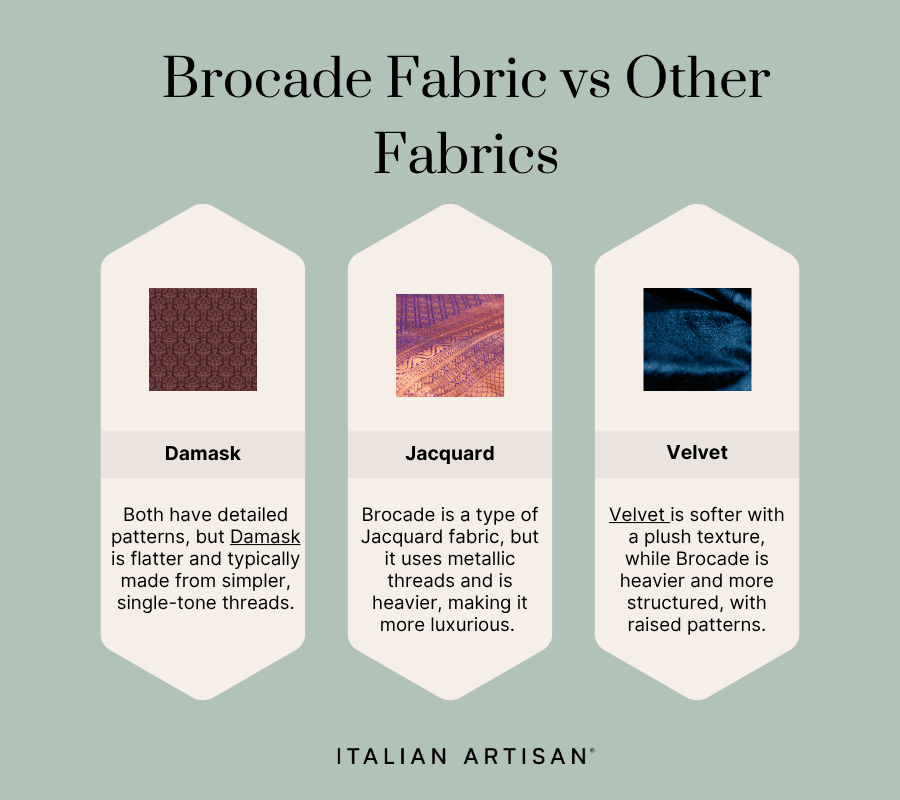
Brocade’s raised patterns and use of metallic threads make it unique among luxury fabrics, perfect for formal occasions and special wear.
How Brocade Fabric Is Manufactured
Brocade fabric is made using a specific weaving technique that creates its intricate patterns and luxurious texture. Here’s an overview of the manufacturing process:
- Fiber Selection:
The process begins with selecting the fibers. Brocade can be made from silk, synthetic fibers, or metallic threads, depending on the desired finish. Silk offers a luxurious sheen, while synthetic fibers like polyester provide a more affordable option. - Weaving:
Brocade is traditionally woven using a Jacquard loom, a type of loom that allows for the creation of complex patterns directly into the fabric. This process involves weaving multiple threads simultaneously to form the intricate designs, often featuring raised patterns. Metallic threads are woven alongside the primary fibers to give the fabric its distinctive shine. - Finishing:
After weaving, the fabric is finished to enhance its texture and appearance. This may include processes like dyeing, washing, or pressing to achieve the final look. The metallic threads are sometimes coated for added durability and shine. - Quality Control:
Finally, the fabric undergoes strict quality control to ensure the patterns are evenly woven and the fabric meets the desired standards. This step checks for any flaws or inconsistencies in the design, texture, or color.
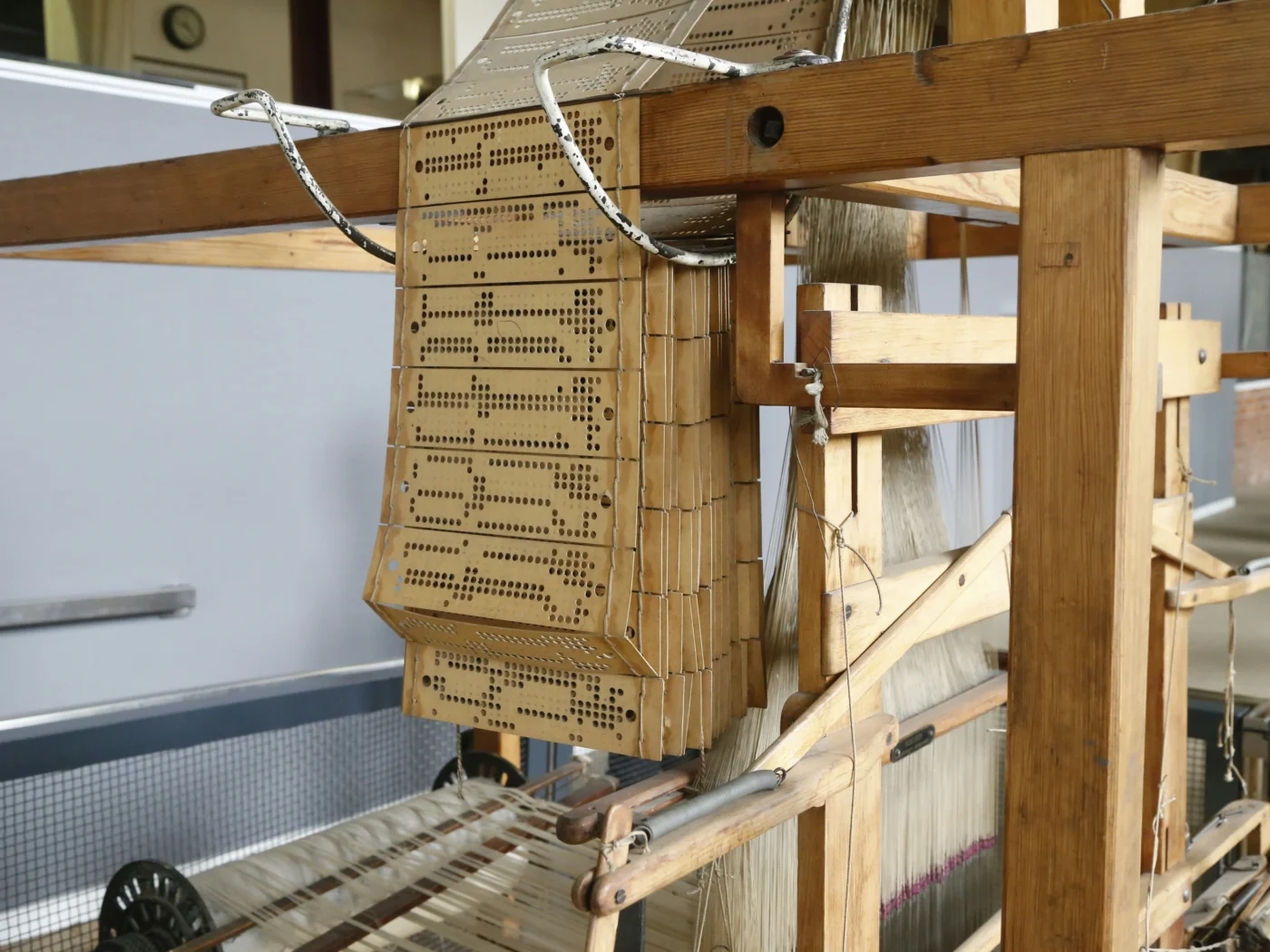
The manufacturing process of Brocade is intricate and requires skilled craftsmanship, making it a fabric associated with luxury and fine design. The combination of the Jacquard weaving technique and metallic threads is what gives Brocade its signature elegance and intricate patterns
Produce your fashion collection with us
Common Uses in Fashion
Brocade fabric is renowned for its opulence and intricate patterns, making it a popular choice for high-end fashion and formal wear. Here are some common uses of Brocade in the fashion industry:
- Evening Gowns and Dresses:
Brocade’s luxurious texture and intricate patterns make it a favorite for evening wear, such as gala dresses, wedding gowns, and cocktail dresses. The fabric’s rich appearance adds sophistication and elegance to special occasions. - Jackets and Coats:
Brocade is often used in outerwear, particularly for structured jackets and coats. Its durability and weight make it ideal for formal or statement pieces that stand out in high-fashion collections. - Accessories:
Brocade is also popular for accessories like handbags, shoes, and scarves. The fabric’s elaborate designs and metallic shine add a touch of luxury to these fashion items, making them perfect for both casual and formal settings. - Home Décor Fashion:
In addition to clothing, Brocade is used in home décor, particularly for upholstery, curtains, and pillows. Its rich texture and patterns bring a sense of luxury to any interior.

Brocade’s versatility and distinctive appearance make it a go-to fabric for anyone looking to add an elegant, regal touch to their wardrobe or home décor. Whether used in high-fashion garments or decorative accessories, Brocade remains a symbol of sophistication and luxury.
Understanding the Environmental Impact of Brocade Fabric
Brocade fabric, while luxurious and beautiful, does have environmental implications, especially depending on the materials used in its production. Here’s a look at the environmental impact of Brocade:
- Silk Brocade:
Silk is a natural fiber, but its production process can be resource-intensive. The farming of silkworms requires large amounts of water and energy, and the process of extracting silk can involve chemicals. However, silk is biodegradable, making it more eco-friendly than synthetic alternatives. - Synthetic Brocade:
Many modern Brocade fabrics are made from synthetic fibers like polyester or nylon. These materials are not biodegradable and can contribute to microplastic pollution. Additionally, the production of synthetic fibers requires significant energy and chemical use, leading to a larger carbon footprint compared to natural fibers. - Metallic Threads:
The metallic threads woven into Brocade, often made from aluminum or other metals, add to the fabric’s luxurious appearance but can raise environmental concerns. These threads are usually produced through energy-intensive processes, and recycling them can be challenging. - Sustainable Alternatives:
To reduce the environmental impact, some manufacturers are turning to more sustainable practices, such as using organic silk or recycled polyester. Additionally, efforts to minimize water and energy use during production can help reduce the overall environmental footprint of Brocade fabrics.

In conclusion, while Brocade can be made with eco-friendly materials like organic silk, its use of synthetic fibers and metallic threads raises sustainability concerns. Opting for sustainable production practices and alternative materials can help mitigate these environmental impacts, making Brocade a more eco-conscious choice.
Exploring Price Points and Value for Money
Brocade fabric comes in a range of prices depending on its materials and production process:
- Silk Brocade:
The most expensive option, offering luxury, richness, and durability. Ideal for high-end fashion, it justifies its price with lasting elegance. - Synthetic Brocade:
A more affordable alternative, made from polyester or rayon. It mimics the look of silk but is less costly and easier to care for, making it ideal for mid-range fashion and décor. - Blended Brocade:
A mix of natural and synthetic fibers, providing a balance between luxury and cost. Perfect for everyday fashion items like jackets and skirts.
Overall, Brocade offers good value for money, with silk providing high-end luxury, while synthetic and blended options deliver elegance at a more affordable price.
Conclusion
Brocade fabric is a luxurious textile known for its intricate patterns and elegant appearance. Made from silk, synthetics, and metallic threads, it’s used in fashion and home décor for its rich texture. While silk Brocade is the most expensive and luxurious, synthetic and blended options offer more affordable alternatives. The environmental impact can vary, but sustainable options like organic silk are helping to reduce it. Overall, Brocade remains a timeless fabric, combining beauty, tradition, and versatility.
FAQs
- What is Brocade fabric made from?
Brocade fabric is traditionally made from silk, but modern versions can also include synthetic fibers like polyester, rayon, and metallic threads. - What makes Brocade fabric unique?
Brocade is known for its intricate, raised patterns woven into the fabric, often using metallic threads, which give it a rich, textured look. - How should I care for Brocade fabric?
Brocade should be gently cleaned, preferably dry-cleaned, to preserve its delicate patterns and avoid damage to the metallic threads. If washing is necessary, hand wash in cold water and air dry. - Is Brocade fabric durable?
Yes, Brocade is durable, especially silk or synthetic blends, but it’s best to handle it carefully due to its intricate weave and metallic threads. - Can Brocade be used for casual clothing?
While Brocade is traditionally used for formal wear, its versatility allows it to be used for statement pieces in casual fashion, like jackets or skirts, when paired with simpler fabrics. - Is Brocade fabric eco-friendly?
Brocade made from organic silk or recycled materials can be more eco-friendly. However, traditional silk and synthetic fibers may have a larger environmental impact due to their production processes. - What are the best uses for Brocade fabric?
Brocade is ideal for evening wear, formal attire, home décor, upholstery, and accessories due to its luxurious texture and intricate designs. - How do I tell the difference between Brocade and other woven fabrics?
Brocade features raised, woven patterns that give it texture, whereas other woven fabrics like Damask and Jacquard may not have the same 3D effect or metallic shine. - Is Brocade fabric expensive?
Silk Brocade is the most expensive, but synthetic and blended options provide more affordable alternatives with similar aesthetic appeal. - Can Brocade be used for home décor?
Yes, Brocade is commonly used for upholstery, curtains, and decorative pillows due to its rich appearance and durability.

